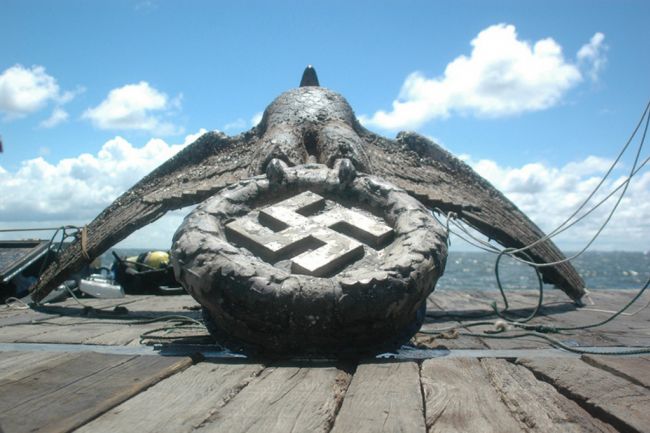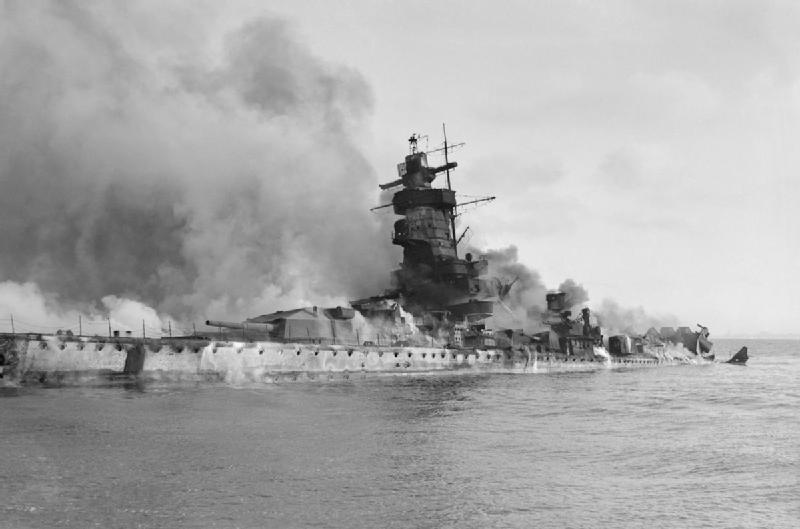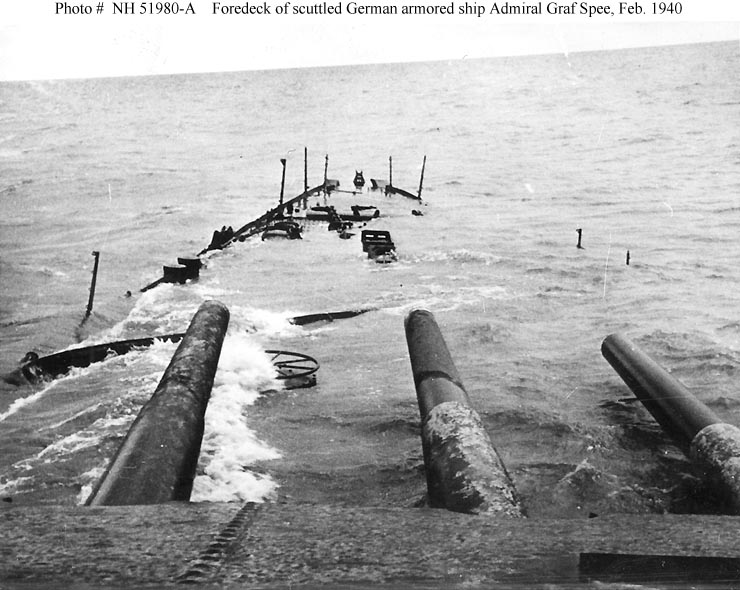
The huge bronze eagle and swastika, personally designed by Hitler, was salvaged by a British-led team from the stern of the pocket battleship Admiral Graf Spee in 2006. 77 years later, it’s own battle still continues.
War trophies don’t come much more imposing than the solid bronze statue that once adorned the prow of the Graf Spee, a notorious German battleship that sank numerous Allied merchant vessels. When a 700 pound bronze statue of an eagle perched upon a giant swastika sunk onboard German battleship Graf Spee off the coast of Uruguay in 1939, it was thought to be lost forever. Following its recovery from the watery depths by local business man Alfredo Etchegaray in 2006, no one seems quite sure what to do with it.
In
December of 1939 the German pocket battleship Admiral Graf Spee fought a
relentless battle with an allied task force off the coast of Uruguay.
Badly damaged after a ferocious fight, the Admiral Graf Spee was pulled
into a Uruguay harbor and scuttled. Seventy-five years later, pieces of
the wreckage are in the hands of the Uruguay government and salvagers,
prompting a debate about what to do with the Nazi artifacts.
The
ship’s captain, Hans Langsdorff, scuttled the damaged vessel offshore
outside the capital of Montevideo after the Battle of the River Plate
after British intelligence tricked him into believing the Royal Navy was
about to surround the ship. It burned for three days before finally
sinking; Langsdorff killed himself shortly afterward.
According to Etchegaray, salvaging the Graf Spee wreck took 30 years and $5 million. The country’s supreme court has since awarded him 50 percent ownership of the piece, with the government retaining the rights to the other half. He is hoping for a return on his investment through selling or displaying the sculpture, but the government seems reluctant to do so. Uruguay may be particularly uneasy about the statue because many Nazi war criminals fled to South America following the war’s conclusion.
Etchegaray believes that his country is being pressured by Germany to keep the controversial piece out of sight. “Why shouldn’t it be displayed publicly, in an appropriate way, of course, with historical explanation?” he argued in an interview with the Global Post. “That’s what happens with the Roman Colosseum, with artifacts from the Khmer Rouge, with torture instruments used by the Inquisition.”
“If the government wants to bury this statue they have the right to do that, but we also have the right to get half the money for it,” Etchegaray added.
Montevideo art dealer Jose Enrique Gomensoro is hoping to sell the businessman’s stake, which he expects is worth $15 million and has already received offers. While he assured the Global Post that finding a buyer won’t be a problem, “it’s very hard to say how much it will fetch. It could all depend on the whim of a single collector. How badly do they want it?”

William Rey Ashfield, a former head of the National Heritage Commission, thinks a $15 million price tag is way too high, but recognizes the unique value of the statue. “It could be a good attraction for a museum”
“Germany is on the sidelines” he said “If anything, the problem is that they don’t want to get involved, although they would definitely be concerned at the possibility of a private sale leading to the statue falling into the hands of neo-Nazis or being used to glorify the Third Reich.”
“It could be a good attraction for a museum. But it is a controversial piece that many people will also reject. It is a hot potato,” he added.
Uruguay – and other Latin American nations like Argentina and Brazil – became the homes of many Nazi war criminals following the demise of the Third Reich. Aribert Ferdinand Heim, an infamous SS doctor named Dr. Death by his Nazi concentration camp victims, lived clandestinely in Uruguay until 1983 and Adolf Eichmann, known as the author of the Holocaust, was tracked down by Israeli intelligence in Argentina in 1960.
Until a resolution can be reached, the statue is still being stored in a Uruguayan navy warehouse.
Lead image credit Alfredo Etchegaray

Δεν υπάρχουν σχόλια:
Δημοσίευση σχολίου